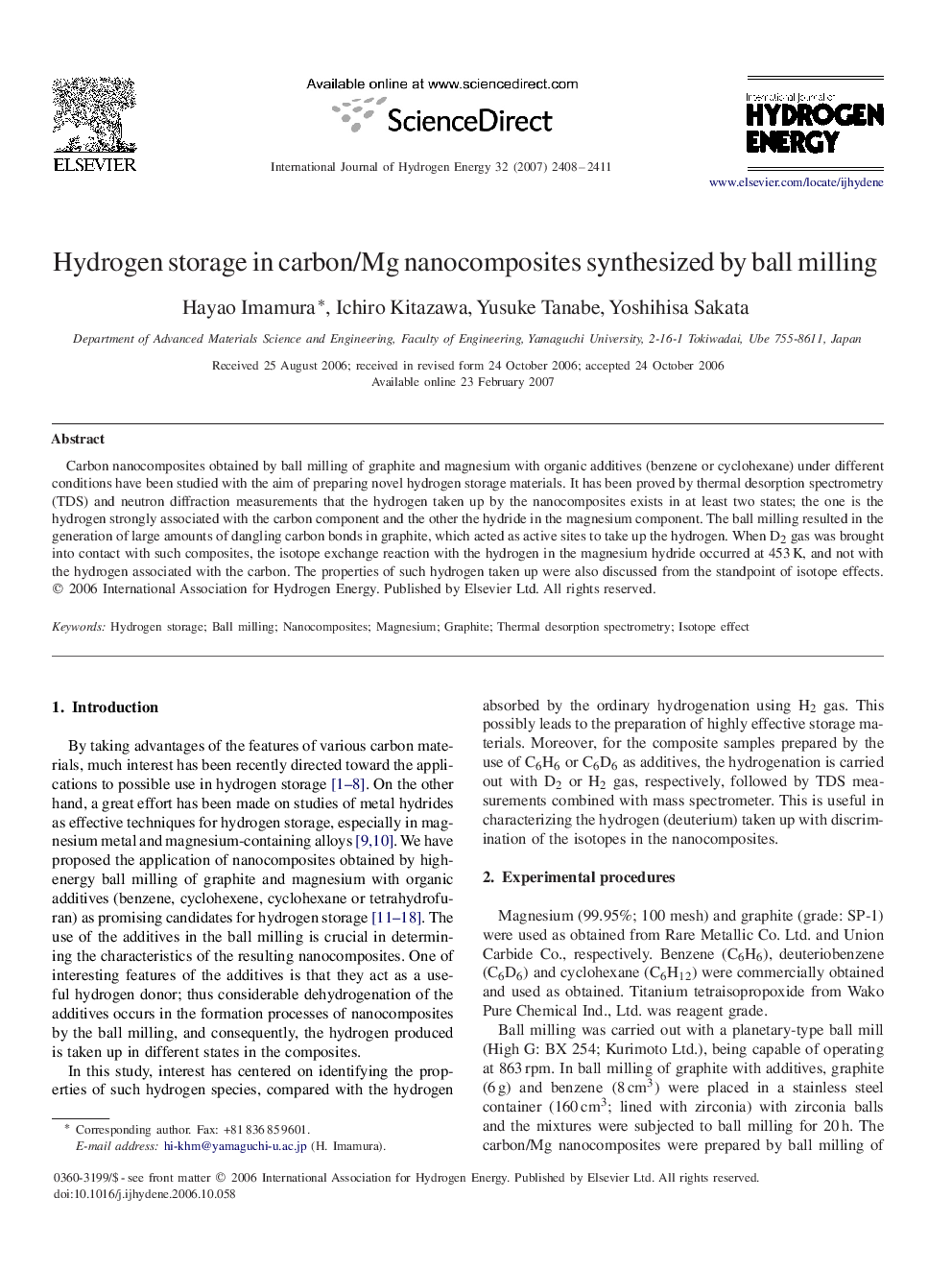| Article ID | Journal | Published Year | Pages | File Type |
|---|---|---|---|---|
| 1280345 | International Journal of Hydrogen Energy | 2007 | 4 Pages |
Abstract
Carbon nanocomposites obtained by ball milling of graphite and magnesium with organic additives (benzene or cyclohexane) under different conditions have been studied with the aim of preparing novel hydrogen storage materials. It has been proved by thermal desorption spectrometry (TDS) and neutron diffraction measurements that the hydrogen taken up by the nanocomposites exists in at least two states; the one is the hydrogen strongly associated with the carbon component and the other the hydride in the magnesium component. The ball milling resulted in the generation of large amounts of dangling carbon bonds in graphite, which acted as active sites to take up the hydrogen. When D2 gas was brought into contact with such composites, the isotope exchange reaction with the hydrogen in the magnesium hydride occurred at 453Â K, and not with the hydrogen associated with the carbon. The properties of such hydrogen taken up were also discussed from the standpoint of isotope effects.
Keywords
Related Topics
Physical Sciences and Engineering
Chemistry
Electrochemistry
Authors
Hayao Imamura, Ichiro Kitazawa, Yusuke Tanabe, Yoshihisa Sakata,
